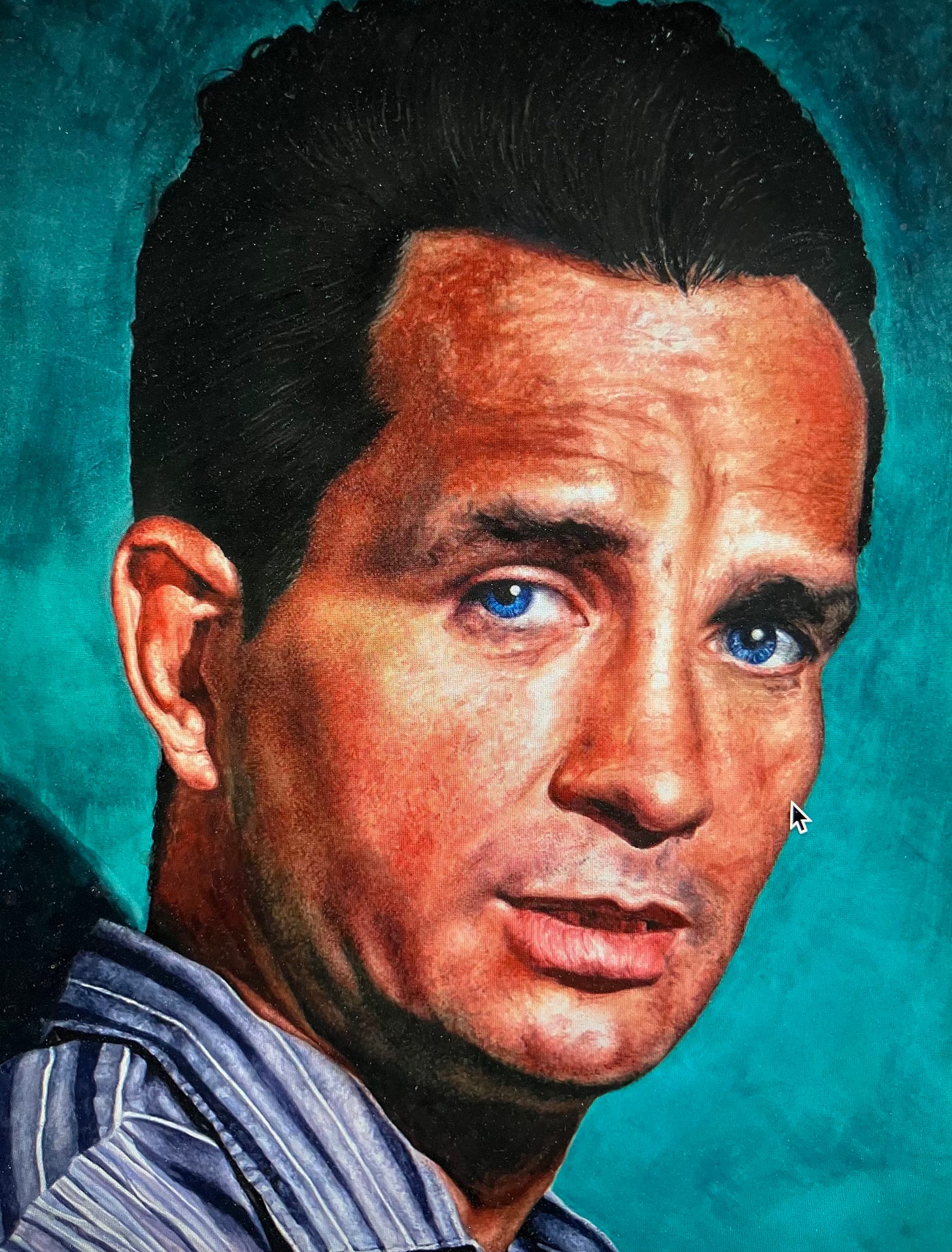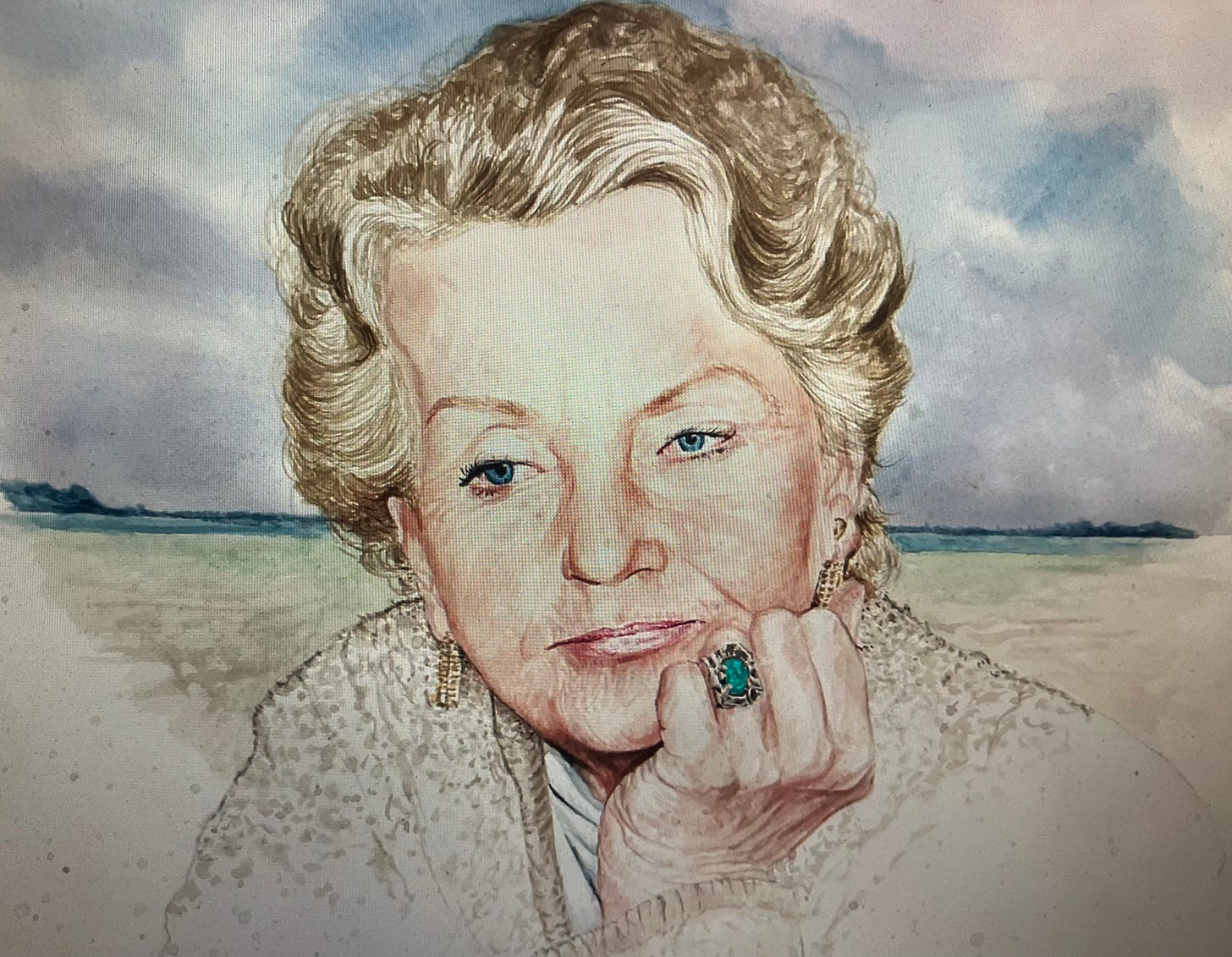Jonathan Collins is an American artist and painter, born in 1969, who has been ‘drawing continuously since the age of three’. His work has been widely exhibited in galleries and museums. For more than 30 years he has taken a particular interest in the Beat writers and their circle.
In 1988, Collins attended the Pennsylvania Academy of Fine Arts in Philadelphia but left after a year and managed to secure grants from a private arts foundation in Quebec, Canada.
He then travelled extensively throughout Europe and North America, painting all the way, while visiting the historic Gothic cathedrals and studying the great masters in museums on both sides of the Atlantic.
In the early 1990s, Collins met and interacted with several of the surviving Beat writers, including Allen Ginsberg, Gregory Corso and Peter Orlovsky. Thus began an avid interest in Beat literature.
In 2019, Collins’ Beat concerns were reflected and exhibited in a show entitled ‘Scenes of Kerouac’s Lowell’, presented in the Massachusetts city where the novelist had grown up.
Since that time, his portraits have appeared regularly in magazines such as Beat Scene, on the cover of the book Gregory Corso: Ten Times a Poet and also the cover of the audiobook of Kerouac's Visions of Gerard.
In 2023, Collins began a sequence of watercolour paintings called the ‘Beat Author’ series. He is currently at work on number 18 and plans to exhibit them and release a book of all the portraits in the near future.
Jonathan Collins spoke to Rock and the Beat Generation about his interests in Beat writing and the musical worlds linked to that literary scene…
What attracted you to the Beats? When did you first encounter them? Do you have a favourite text, novel or poetry?
The first time I heard or knew of the Beats was in 1982 when Van Morrison released ‘Cleaning Windows’, a song that mentions ‘Kerouac's Dharma Bums and On the Road’. This was at the age of 12 and then a year later I read No One Here Gets Out Alive, a biography of Doors singer Jim Morrison. Within the pages of that biography I discovered all the writers that would fascinate me in later years: Kerouac, Ginsberg, Cassady, Corso, Ferlinghetti, Celine, Huxley and many others.
My favorite Beat poetry is Mexico City Blues by Jack Kerouac, a favourite novel, Journey to the End of the Night, by Louis-Ferdinand Céline, a Beat precursor.
Pictured above: ‘Kerouac’ by Jonathan Collins
What is the relationship between the Beat writers and music? How do you think that literary scene and musical sound connect(ed)?
A vast, huge relationship. Between the Dixieland jazz to later bebop and hard bop, to Russian symphonies to folk music, the key Beats had an enormously close relationship to music. They incorporated not only the literal chords of construction in music but also extended the use of contemporary jazz slang into their work.
The scene conflated actually: the writers, the painters, the musicians, actors and actressesses, all dug one another, critiqued and celebrated each other, and many interesting collaborations were formed, such as work involving the Living Theater and on into the new form of cinema verité of John Cassavetes.
When artist of similar sensibilities and aesthetic meet, as Gregory Corso said, ‘Bam, you better believe they'll talk.’
Pictured above: Collins’ ‘Gary Snyder’
As an artist and creative have you been shaped or influenced by Beat experiences?
As an artist/painter, I have been enormously influenced by the Beats in the way of interpreting colour, form, a worldview, a crow's eye view of the world and everything in it. What is sacred, the land (Gary Snyder), human interconnections, Kerouac’s quest for spiritual salvation and enlightenment, Ginsberg the same, the poetic artistic flights of Corso, the rhythms and word salads of Bob Kaufman, the dissonance and atonality of Burroughs' work. Also,I must say, a deep reverence for my own life: an understanding of the holiness of life and all it encompasses is a direct bouquet from the Beats.
Which musical artists from whichever era appear to make links to the Beat Generation – and how?
The list is gigantic and the names branch across flowingly like a musical family tree, encompassing the early blues of Ma Rainey and jazz of Billie Holiday and Lester Young, the bop of Parker and Gillespie, the heartbroken yodel of Jimmie Rodgers and Hank Williams, to the yearning strain of Stravinsky strings.
British scholar Dave Moore has formed an amazing list of examples, some of which I contributed, that is the most comprehensive I've ever encountered. Van Morrison, Bob Dylan, King Crimson, the Smiths, the Beatles, the Doors, Joy Division, Belle and Sebastian, and countless other rock and psychedelic bands, folk music, Ramblin' Jack Elliot, rappers Digable Planets, artists from the new wave and punk scenes take their openness, bravado and anti-authoritarian stance from the Beats.
Pictured above: ‘Carolyn by the Sea’, Collins’ portrayal of Carolyn Cassady
Who are your own favourite singers, musicians and bands? Do they represent Beat ideas or attitudes in their lives and art?
My favourite singers are Van Morrison, Nina Simone and Bob Dylan. All three artists have extensively absorbed and assimilated ideas and in some cases actual texts into their songs, besides leading non-conformist lifestyles of their own. Bob Dylan, as an example, did a song ‘Desolation Row’ in 1965, the same year Kerouac published Desolation Angels. In that same song, Dylan cribs the phrase ‘In the perfect image of a priest’ directly from the Kerouac book.
Dylan also used the ‘visions’ phrase and ‘blues’ many times, on several albums, obviously derived from his reading of Kerouac and others. It wasn't until his Rough and Rowdy Ways record from 2020 did he acknowledge in song his debt to Corso, Ginsberg and Kerouac.
Smiths lyricist Morrissey also used ‘pretty girls make graves’ from Kerouac's The Dharma Bums, in addition to the oft-repeated question in that novel, ‘What Difference Does It Make?’, a Smiths song on their first album, in 1984. Forty years later he wrote a song, ‘Kerouac's Crack’, still unreleased. Van Morrison has name checked Kerouac and other Beats in numerous songs, such as ‘On Hyndford Street’, ‘In Tiburon’, among many other examples.
The Beat concept of do your own thing, ‘travel, adventure bless, and don't be sorry’ (Kerouac ) could easily be the mantra for all three vocalists and the myriad others who discovered the concepts of the Beat Generation on their own artistic journeys.
Visit Jonathan Collins’ website here







Jonathan Collins. Wow! What an artist! I hate to admit that I'm not familiar with his work, but his portraits of Kerouac, Snyder, and Carolyn Cassady are outstanding, to say the least! "Carolyn By The Sea" is my favorite, of course. In it, she's wearing the turquois ring that I made for her in the '70s. I boaught the stone at the Kingman Mines near Flagstaff, AZ, when I was a "jewelry guy." (The stone was more blue than green, as in the painting, but we'll take it). And Ramblin' Jack Elliot was a friend of my Dad's (who wasn't? Ha ha). He would play his guitar, sitting on the couch in our living room at our home in Los Gatos, CA. My sisters, Cathy, Jami, and I would listen at the hallway door all night. "What's that smell? What are they smoking?" When Jack wasn't playing, they would listen to the album "Sketches of Spain" by Miles Davis, like, all night! Years later, I was on the bill with Ramblin' Jack at a "Beat Tribute" or something at the Great American Music Hall in San Francisco. I recall that backstage there was a gallon of cheap red wine, and Ramblin' Jack himself, with his guitar strapped on, ready to go onstage. I said something clever, like, "nice guitar! Can I play it?" "NO!" We both laughed, and I said, "at least it's not as BEAT up as Willie Nelson's old Martin, with the hole in the spruce top!" (Man, if THAT guitar could talk! The stories it could tell!). So thanks for listening, and Keep The Beat! John Allen Cassady
Fantastic .. great to hear Louis Ferdinand Celine mentioned as Beat precursor.. Ginseng & Cassady went from Beat Hotel to pay Homage to Celine in Meudon. Ginsberg got on his knees and tried to wash his feet Celine was married to Lucille a beautiful flamenco dancer. They had a cat named BEBERT